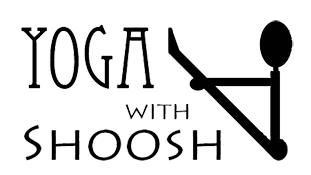
The psoas muscles are a popular topic among yoga teachers these days (and with good reason!) We have come to realize their importance and many of us have begun to recognize how much we have not known all these years! The psoas muscles (one on each side of our bodies) attach at the inner part of the spine from T12 to L5 and connect to the leg, through the abdominal core where it then attaches at the inside of the thigh bone (see graphic.) For those who are still not aware of why the psoas is important, here is a terrific description written by Liz Koch*. She is the “psoas lady” and I went to her personally for some sacral joint pains about 20 years ago, at which time she opened my eyes and hips to what the psoas is and does. I think of her often in relation to my pelvic positioning and I found an article on line that she wrote for Yoga Journal** that goes into wonderful detail on the psoas. In this article she says the psoas is a “bridge linking the trunk to the legs, … is critical for balanced alignment, proper joint rotation, and full muscular range of motion. In yoga, the psoas plays an important role in every asana. In backbends, a released psoas allows the front of the thighs to lengthen and the leg to move independently from the pelvis. In standing poses and forward bends, the thighs can’t fully rotate outward unless the psoas releases. All yoga poses are enhanced by a released rather than shortened psoas.“ I find that most people want to stretch the psoas rather than release it! So, below is an exercise to begin psoas awareness and release.
In my classes, I have found a simple and easy way to let students see for themselves what a released, relaxed psoas feels like. To start with, refer to my Blog from JULY 1, 2013 on THE PELVIS. This will teach you how to lie on your back with the pelvis properly aligned for the following movements. Once you are in this aligned position, then, begin by bringing both knees into your chest. Then extend your arms forward until they are straight, moving your knees forward away from your shoulders, until you feel the full weight of your legs in your fingertips. Notice the jelly-like, softened feeling in your belly since your hands are doing much of the work of your hip flexors, which can then relax. Keep your left hand and leg stable, and let the right foot drop to the floor, keeping the knee bent. Bring your right hand down to the floor by your side. Be aware of the balanced feeling in your pelvis and keep it stable, and relaxed as you inch the toes of your right foot forward just a few inches. Stop, take a breath, and on the exhalation, let your muscles soften and relax. On the next inhalation, move your right foot forward a few more inches. Repeat the breathing and movement 2 more times. At this point, your knee is still bent, but you have moved your foot forward about 12-18 inches. Now, flex your right foot and visualize a 5-pound bag of rice placed on your right knee. Feel how heavy it becomes and let the weight of the rice bag very gradually lower your knee toward the floor, until your leg is completely straight. Liz just explained to me by phone today that when you use this visualization, it allows you to relax the hip flexor muscles in your thighs (the quads). And, overactive quads, which are very common and result from incorrect pelvic alignment, cause tensing of the psoas to balance out their movement. Therefore, to relax the psoas, you need to relax the quads. Next, relax your right foot, and note the beautiful lengthening you can feel in your right hip area. THIS is a lengthened and relaxed psoas resulting from relaxed quads. Ahhhh. Keep the right leg relaxed and repeat the sequence with the left leg.
I always enjoy doing and teaching this exercise. Give it a try and I hope you also find it helpful! Check out Liz’s website (below) and if you get a chance, take one of Liz’s Core Awareness workshops to really learn more about the psoas.
If you have any question or comments, feel free to write on my Ask Shoosh page, or email me at shsh@yogawithshoosh.com.
* Here is Liz Koch’s website: www.coreawareness.com
** Here is the link to the Yoga Journal article: http://www.yogajournal.com/practice/170

